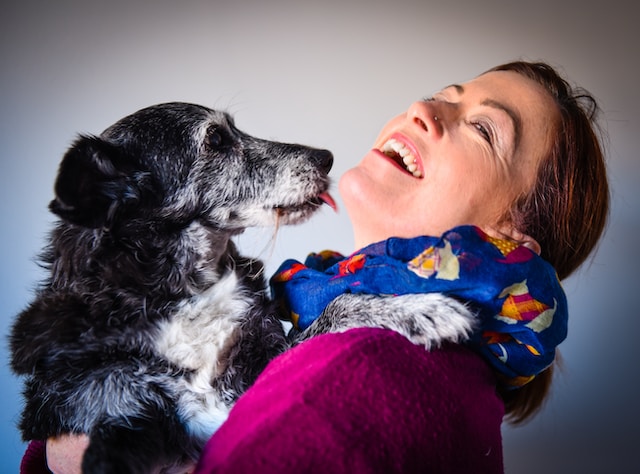Dogs are known for being loyal, friendly, and devoted, but they also have complex ways of communicating. Understanding your dog’s behavior can improve your relationship with them and help you forge a stronger bond. This article will look at two of the most common things dogs do: wag their tails and lick their lips.

Why do canine tails wag?
One of the most recognizable behaviors exhibited by dogs is tail-wagging. Although it is frequently interpreted as a sign of happiness, it can also signify other emotions. A closer examination of the behavior is necessary to comprehend why dogs wag their tails.
To interact with people and other dogs, dogs wag their tails. Different messages can be conveyed depending on the tail’s direction, speed, and height. A high-tail wag conveys assurance and joy, whereas a low-tail wag might suggest submission or insecurity.
The position of a dog’s tail can reveal a lot about its intentions and mood. A stiff tail means that the animal is angry or tense, while a tucked tail means that the animal is afraid or giving up.A fast-wagging tail means that the animal is happy or excited, while a slow-wagging tail can show doubt or hesitation.
An essential component of a dog’s communication behavior is tail wagging. They can express their emotions and communicate with their owners and other dogs thanks to it. Knowing why a dog’s tail wags can help owners better understand their canine companion’s behavior and deepen their relationship.
Why Do Dog Owners Get Licked?
Another typical canine behavior is licking. Although it is frequently interpreted as a loving gesture, it can also mean other things. A closer examination of the behavior is necessary to comprehend why dogs lick their owners for a number of reasons. It may be an expression of love, submission, or relief from stress. Dogs can use licking as a way to express needs like hunger or thirst.
Dogs communicate with people and other dogs using a variety of signals. Body language, vocalizations, and facial expressions are a few of these signals. Recognizing these signals can assist dog owners in interpreting their dog’s behavior and selecting the best course of action.
Your relationship with your dog will likely be more peaceful and solid if you can speak their language. To do this, you must pay attention to how they behave, comprehend how they communicate, and act appropriately.
Training advice for dogs’ behavior
Training your dog can improve their behavior and deepen your relationship. The following advice will help you train your dog:
Use positive reinforcement by giving treats, compliments, and affection to children who behave well.
Be consistent: To prevent confusion, consistently apply the same commands and training techniques.
Establish limits: Set up boundaries and guidelines that your dog must abide by.
To help your dog become more confident and well-behaved, socialize them by exposing them to various people, pets, and environments.
Get help from a trained dog behaviorist or trainer if your dog is acting up.
Being an ethical dog owner requires an understanding of canine behavior. Even though they are only two of many behaviors that dogs exhibit, tail wagging and licking are significant communication cues that tell us a lot about their emotions and intentions. Your relationship with your dog will likely be more peaceful and solid if you can speak their language. The training advice provided in this article will help you train your dog to behave well and fit in with the rest of your family.
